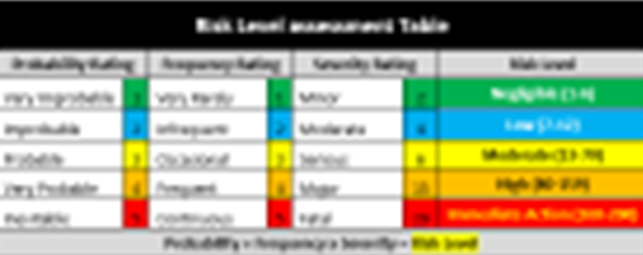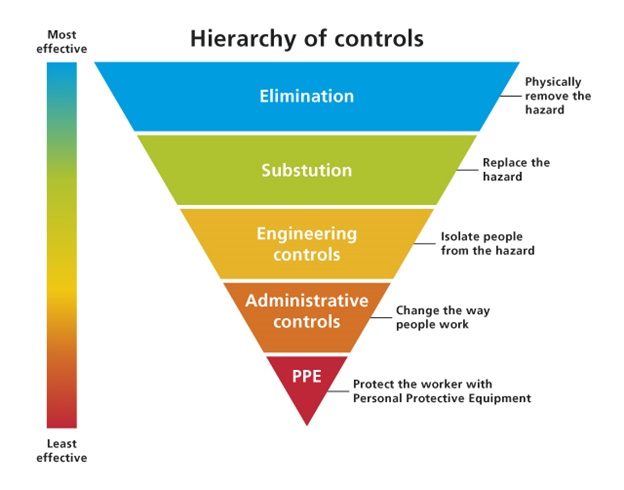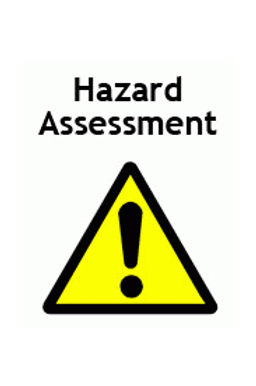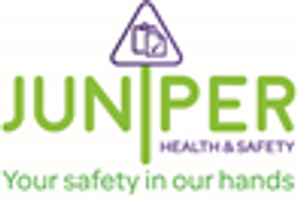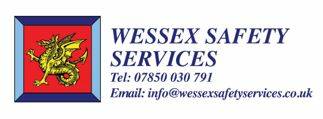Title Page
-
Site conducted
-
Conducted on
-
Prepared by
-
Department
-
Department Manager:
-
Farm Manager:
-
Reason for Assessment being conducted:
- Workplace inspection (e.g. JHSC workplace inspection, pre-shift inspection, housekeeping inspection, supervisor shift-report)
- Meeting (e.g. JHSC, daily production meeting, management meeting, meeting with regulatory body (Fire dep't, Min of Labour)
- Hazards identified (e.g. in unsafe act/condition reports, hazard alerts, audits, etc.)
-
Is a member of the JHSC present for the Risk assesment?
-
Why is the JHSC not involved in this Risk assessment?
-
Who is the JHSC Member?
-
What department do they represent?
Risk Analysis
-
Use this tool to determine the Risk level rating
RECOGNIZE
-
HAZARD
-
What activity or hazard could cause injury or illness?
-
What hazard groups can cause injury, illness, property damage or damage to the environment? (select all that apply)
- Physical Safety
- MSD
- Chemical
- Physical Agent
- Psychosocial
- Biological
- Manual Material Handeling
-
What is the source of the hazard to the associate/environment?
- Compressed Air
- High Pressure Fluids
- Confined Space
- Driving
- Electrical
- Material Handling
- Material Storage
- Molten Material
- Machine or Equipment
- Slip or Trip
- Temperature
- Vehicular Hazards
- Working at Heights
-
What is the potential outcome of exposure to the hazard?
- Skin injection
- Skin injection
- Asphyxiation
- Engulfment
- Entrapment
- Explosion
- Collision
- Contact with pedestrian
- Other
- Stress
- Violence
- Arc flash
- Electrocution
- Fire hazard
- Crushing
- Fire hazard
- Laceration
- Puncture or injection
- Sharp edges - laceration/contusion
- Struck by
- Worker contact
- Fire hazard
- Trip hazard
- Worker contact
- Burn
- Fire
- Flying particles/materials - impact or injection
- Full body pinch point - crushing
- Grinding/Sanding - friction & abrasion
- Impact - stabbing & puncture
- In-running nip - entanglement, drawing in
- Moving part - entanglement, cutting, shear
- Pinch point - crushing or shear
- Rotating or sharp part - cutting or shearing
- Rotation - entanglement
- Sharp edges - laceration/contusion
- Worker contact – laceration/contusion/puncture/other
- Falls to same height
- Burn/Scald
- Falling to surface below
- Objects falling on workers below
- Other
-
What is the source of the hazard to the associate/environment?
- Awkward Posture
- High Force Demands
- Poor Tool or Equipment Design
- Poor Workstation Design
- Repetition
- Static Posture
-
What is the potential outcome of exposure to the hazard?
- MSD injury
- Other
-
What is the source of the hazard to the associate/environment?
- Combustible
- Compressed Gas
- Corrosive
- Flammable
- Reactivity
- Toxic
-
What is the potential outcome of exposure to the hazard?
- Fire/Explosion
- Violent release of energy/gas
- Acid - skin burn/mucous membrane exposure
- Acid/base incompatibility reaction
- Alkaline - skin burn/mucous membrane exposure
- Liquid - Fire/explosion
- Gas - Fire/explosion
- Dangerous reaction
- Absorption - Illness
- Dermatitis
- Ingestion – Illness
- Ingestion – Carcinogen
- Inhalation – Illness
- Inhalation - Carcinogen
- Injection – Illness
- Injection - Carcinogen
-
If Hazardous materials are present, are there SDS sheets available to associates at all times and are associates trained in WHMIS 2015?
-
What SDS sheet or training is required?
-
What is the source of the hazard to the associate/environment?
- Extreme Cold
- Extreme Heat
- Lighting
- Noise
- UV Exposure
- Vibration
-
What is the potential outcome of exposure to the hazard?
- Cold stress
- Heat stress
- Hazard exposure due to lack of visibility
- Eye strain
- Hearing loss
- Skin or eye damage
- Hand/Arm - MSD or vascular disorder
- Whole body - Back pain
-
What is the source of the hazard to the associate/environment?
- Boredom
- Harassment
- Stress
- Violence
- Work overload
- Long hours
-
What is the potential outcome of exposure to the hazard?
- Mental Illness
- Violent Situation
- Physical Health Decline
-
What is the source of the hazard to the associate/environment?
- Bacteria
- Mold
- Viral
-
What is the potential outcome of exposure to the hazard?
-
What is the source of the hazard to the associate/environment?
- Bending
- Lifting
- Pushing or Pulling
-
What is the potential outcome of exposure to the hazard?
-
Hazard Images and DIagrams
-
Additional Comments
ASSES
-
Assessment
-
What is the probability of an incident occurring?
-
How often is the job task interacting with the hazard?
-
How severe could an incident be?
-
What is the risk level? (Probability + Frequency x Severity)
- Class E (1-6): A condition or practice that is likely to result in minor non disabling injury or illness (first aid, property damage)
- Class D (7-12): A condition or practice that is likely to result in minor non disabling injury or illness (first aid, property damage).
- Class C (13-79): A condition or practice with moderate likelihood to cause permanent disability, loss of life or body part with moderate likely hood of occurrence
- Class B (80-159): A condition or practice that is likely to cause permanent disability, loss of life or body part with moderate likely hood of occurrence - High Priority
- Class A (160-200): A condition or practice that is likely to cause permanent disability, loss of life or body part with high likely hood of occurrence - Immediate action must be taken
-
If immediate action is required; issue a work order from the app to the Maintenance Manager of the location.
-
What is being done immediately to prevent an incident?
-
What is the Risk Priotrity?
-
Additional Comments:
CONTROLS AND RECCOMENTDATIONS
-
Use this tool when considering control implementation and recommendations.
Control and Recommendation
-
What legal requirements, codes, benchmarks or standards apply to the identified hazards, work processes or work activities?
- OHSA
- CSA
- Electrical
- Fire/Building
- Other
-
What legal requirement is in non-coompliance?
-
What is currently being done to eliminate or control the hazard?
-
RECCOMENDED ACTION - What future actions are needed to eliminate or control hazards? Indicate recommendations here - include diagrams and photos if necessary.
-
Who is responsible for overseeing the change?
-
Are controls immediately put into place or recommended introducing a new hazard? (congestion, confined space, etc.)
-
Describe in detail what the new hazard identified is:
-
Will new training be required for the new controls put into place?
-
What training will be required?
-
Are any labels, signs or decals required if controls are put in place?
-
What labels, signs or decals are required?
-
Is additional PPE required?
-
What PPE is required?
-
Is a Safety Alert required or alteration to a hazard checklist?
-
What action is required?
-
What CSA Standard is in non-compliance?
-
What is currently being done to eliminate or control the hazard?
-
RECCOMENDED ACTION - What future actions are needed to eliminate or control hazards? Indicate recommendations here - include diagrams and photos if necessary.
-
Who is responsible for overseeing the change?
-
What electrical code item is non-compliant?
-
What is currently being done to eliminate or control the hazard?
-
RECCOMENDED ACTION - What future actions are needed to eliminate or control hazards? Indicate recommendations here - include diagrams and photos if necessary.
-
Who is responsible for overseeing the change?
-
What fire/building code item is non-compliant?
-
What is currently being done to eliminate or control the hazard?
-
RECCOMENDED ACTION - What future actions are needed to eliminate or control hazards? Indicate recommendations here - include diagrams and photos if necessary.
-
Who is responsible for overseeing the change?
-
Describe the non-compliance
-
What is currently being done to eliminate or control the hazard?
-
RECCOMENDED ACTION - What future actions are needed to eliminate or control hazards? Indicate recommendations here - include diagrams and photos if necessary.
-
Who is responsible for overseeing the change?
-
Recommended timeline of completion:
-
Additional Comments:
EVALUATE
-
Evaluation
-
Following recommended control implementation, how likely is the hazard to cause injury or illness now?
-
Following recommended control implementation, how often is the job task interacting with the hazard?
-
Following recommended control implementation, how severe could an incident be?
-
Following recommended control implementation, what is the level of risk? (Probability + Frequency x Severity)
- Class E (1-6): A condition or practice that is likely to result in minor non disabling injury or illness (first aid, property damage)
- Class D (7-12): A condition or practice that is likely to result in minor non disabling injury or illness (first aid, property damage).
- Class C (13-79): A condition or practice with moderate likelihood to cause permanent disability, loss of life or body part with moderate likely hood of occurrence
- Class B (80-159): A condition or practice that is likely to cause permanent disability, loss of life or body part with moderate likely hood of occurrence - High Priority
- Class A (160-200): A condition or practice that is likely to cause permanent disability, loss of life or body part with high likely hood of occurrence - Immediate action must be taken
-
Additional Comments:
Signatures
-
Auditor:
-
JHSC Rep:
-
Supervisor/Manager of the Department:
-
Farm Manager:
-
Responsible Party for Controls Implementation:






